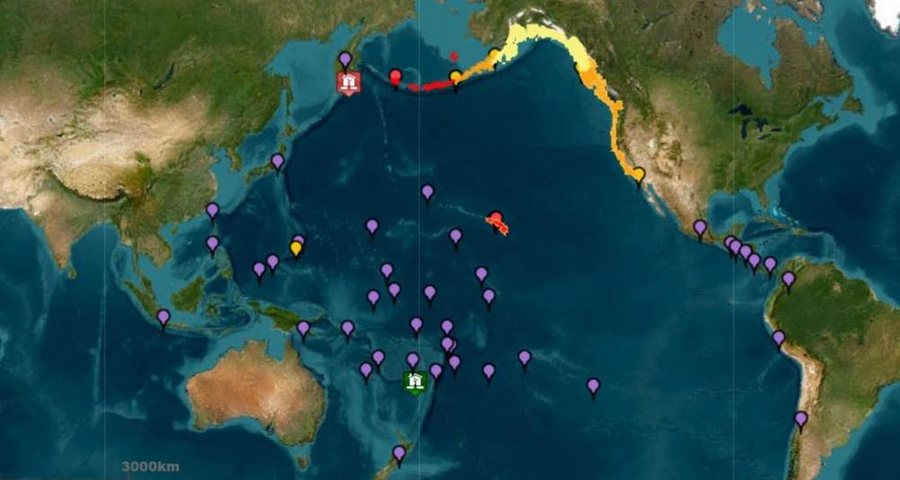8.8 Magnitude Earthquake in Russia: The Ring of Fire, one of the most seismic zones in the world
- Korca Boom
- Jul 30
- 2 min read
The 8.8 magnitude earthquake that struck Kamchatka, Russia, has drawn attention to one of the most dangerous and unstable regions on the planet: the Pacific Ring of Fire. The resulting tremors and tsunamis are manifestations of the ongoing geological activity affecting a vast area of the Pacific Ocean. But what do we really know about the Ring of Fire? And why is Kamchatka among the regions most exposed to earthquakes and volcanic activity?
What is the Pacific Ring of Fire?
The Pacific Ring of Fire is a geological belt encircling the Pacific Ocean for over 40,000 kilometers. It is characterized by extraordinary seismic and volcanic activity due to the presence of numerous constantly shifting tectonic plates. The main plates involved are the Pacific Plate, the North American Plate, the South American Plate, the Philippine Plate, and the Indo-Australian Plate. The most significant geological phenomenon here is subduction, the sliding of one plate beneath another — which generates deep and potentially devastating earthquakes.
Where is the Ring of Fire located?
This belt runs along the eastern coasts of Asia (Japan, the Philippines, Indonesia), Oceania (Papua New Guinea, New Zealand), and continues along the western coasts of the Americas (from Alaska to Chile). Approximately 90% of the world's seismic activity and 75% of the planet’s active volcanoes are concentrated in this belt. Therefore, the Ring of Fire is truly a ring of fire and instability.
Why is Kamchatka prone to earthquakes?
The Kamchatka Peninsula lies along the subduction zone between the Pacific and Okhotsk plates, where one plate slides beneath the other. This movement builds up immense pressure that is released in the form of earthquakes, some of which are extremely powerful. Additionally, the region is marked by the presence of over 160 volcanoes, 29 of which are active — including Klyuchevskaya Sopka, one of the largest in the world. The combination of tectonic shifts and volcanic activity makes this region extremely unstable and under constant scientific monitoring.
Major Earthquakes in Kamchatka's History
The region has experienced numerous historic seismic events:
1952: An earthquake estimated between magnitude 8.5 and 9.0 struck Severo-Kurilsk, generating a tsunami with waves up to 18 meters high and causing over 2,300 deaths.
2006: A 7.7 magnitude earthquake struck the eastern coast of Kamchatka, causing moderate damage.
2020: A 7.5 magnitude earthquake triggered an extended tsunami warning, but caused limited damage.
2025: The recent 8.7 magnitude event has revived past fears, with tsunami waves and warnings issued across the Pacific.
Scientists agree that the Ring of Fire will continue to be the site of major seismic events. Continuous monitoring, the use of advanced sensors, and early warning systems are essential to reducing the risk to populations. The Kamchatka event is yet another reminder of Earth's power and unpredictability.
“KORÇA BOOM”



















